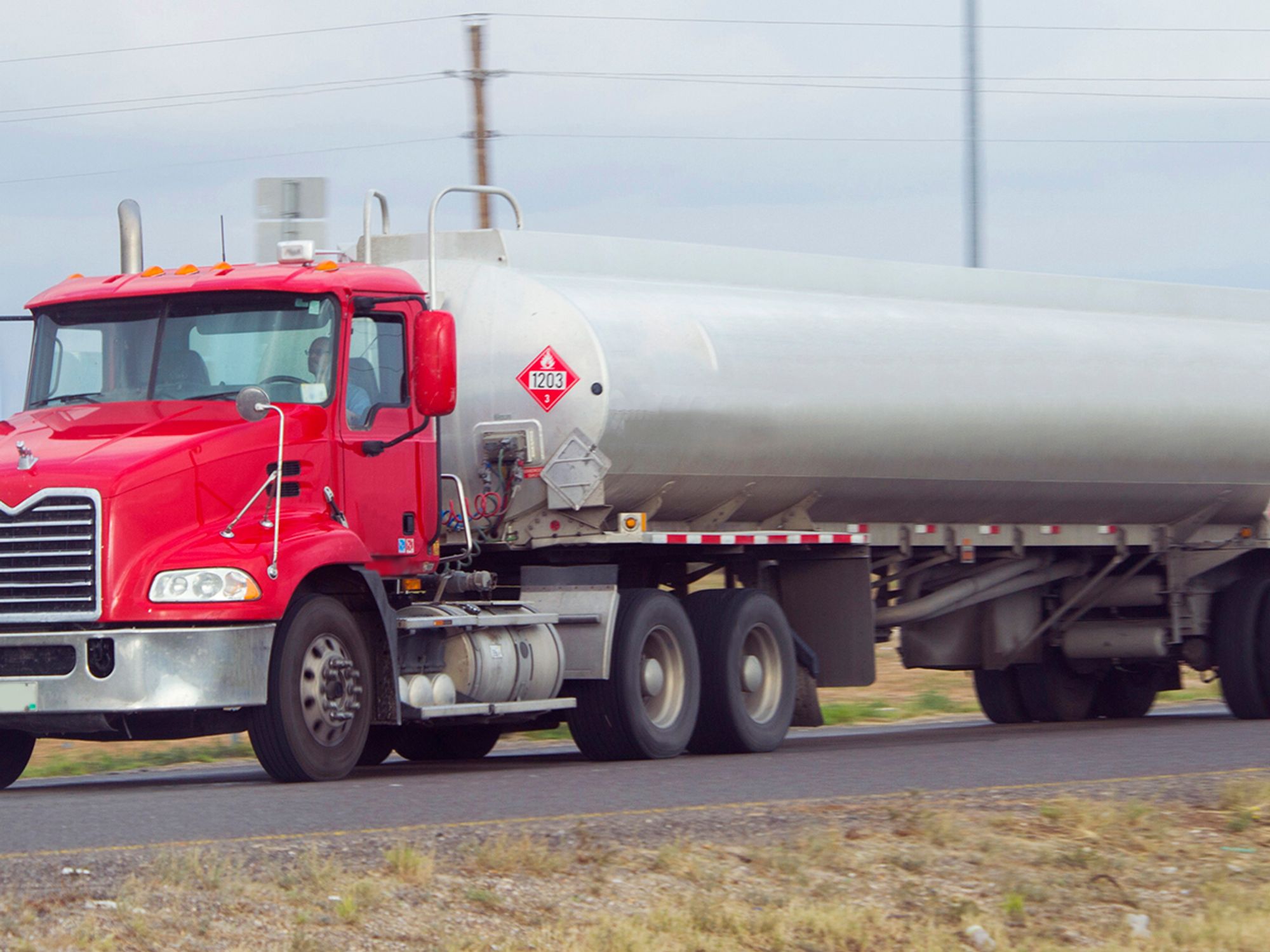Means of containment for dangerous goods

- Means of containment in Canada are defined as large (with a capacity greater than 450 liters) and small (with a capacity less than or equal to 450 liters).
- Regulations for the means of containment for dangerous goods vary based on the method of transport including road, rail, marine or air.
- There are set limits to the total net explosives quantity of all explosives that may be transported together in a road vehicle.
There are two general types of containment in Canada, large means of containment and small means of containment.
A large means of containment is a containment with a capacity greater than 450 liters.
A small means of containment is a containment with a capacity less than or equal to 450 liters.
Loading and unloading dangerous goods
Handling means loading, unloading, packing, or unpacking dangerous goods, and includes storing them, in a means of containment during the transportation process.
Loading and securing means of containment is addressed in Part V of the Transportation of Dangerous Goods (TDG) Clear Language regulations.
Road/highway
Despite the requirements in Part 2 (Classification), Part 3 (Documentation), and Part 4 (Dangerous Goods Safety Marks), if transport has been or is to be by aircraft, a person may handle or transport dangerous goods by road vehicle to or from an aircraft, an aerodrome, or an air cargo facility in accordance with the classification, marking, labelling, and documentation requirements of the International Civil Aviation Organization (ICAO) Technical Instructions, if:
- The information required on the shipping document is easy to identify, legible, in indelible print, in English or French and includes, if applicable, the information relating to the approved Emergency Response Assistance Plan (ERAP); and
- The person complies with the following provisions in Part 3 (Documentation):
- Section 3.2, Carrier responsibilities,
- Paragraph 3.5(1)(f) and subsection 3.5(2), concerning a 24-hour number on a shipping document,
- Section 3.7, Location of a shipping document: road, and
- Section 3.10, Location of a shipping document: storage in the course of transportation.
This allowance does not apply if Canada’s dangerous goods regulations forbid the transport of the dangerous goods or if the dangerous goods are not regulated by the ICAO Technical Instructions but are regulated by Canada’s dangerous goods regulations.
If dangerous goods are transported to or from an aircraft, an aerodrome, or an air cargo facility, by a road vehicle, then the road vehicle, or any means of containment visible from outside the road vehicle, must have placards displayed on it.
Transporting dangerous goods to or from a vessel, a port facility or a marine terminal
Despite the requirements in Part 2 (Classification), Part 3 (Documentation), and Part 4 (Dangerous Goods Safety Marks), if transport has been or is to be by vessel, a person may handle or transport by road vehicle an international consignment of dangerous goods to or from a vessel, a port facility or a marine terminal in accordance with the classification, marking, labelling, placarding and documentation requirements of the International Maritime Dangerous Goods (IMDG) Code if:
- The information required on the shipping document is easy to identify, legible, in indelible print, in English or French and includes, if applicable, the information relating to the approved ERAP referred to in subsection 3.6(1); and
- The person complies with the following provisions in Part 3 (Documentation):
- Section 3.2, Carrier responsibilities,
- Paragraph 3.5(1)(f) and subsection 3.5(2), concerning a 24-hour number on a shipping document,
- Section 3.7, Location of a shipping document: road, and
- Section 3.10, Location of a shipping document: storage in the course of transportation.
This allowance does not apply if Canada’s dangerous goods regulations forbid the transport of the dangerous goods or if the dangerous goods are not regulated by the IMDG Code but are regulated by these Canada’s dangerous goods regulations.
If dangerous goods are transported in a large means of containment to or from a vessel, a port facility or a marine terminal, the large means of containment must have placards displayed on it in accordance with Part 4 (Dangerous Goods Safety Marks) or the IMDG Code.
Reshipping in Canada
When a consignment of dangerous goods is transported from a place outside Canada to a place in Canada and is reshipped within Canada by road vehicle, the dangerous goods safety marks displayed in accordance with 49 CFR, the ICAO Technical Instructions or the IMDG Code at the time of entry into Canada may continue to be displayed, except that the large means of containment containing the dangerous goods must have placards displayed on it in accordance with Part 4 (Dangerous Goods Safety Marks).
The shipping document that accompanies the dangerous goods must include a notation that the dangerous goods safety marks are in accordance with 49 CFR, the ICAO Technical Instructions or the IMDG Code, if they differ from the ones required to be displayed by Part 4 (Dangerous Goods Safety Marks).
Maximum net explosives quantity in a road vehicle
The total net explosives quantity of all explosives that are transported together in a road vehicle must be less than or equal to the following limits:
- 25 kilograms if any of the explosives are UN0190, SAMPLES, EXPLOSIVE;
- 2,000 kilograms if any of the explosives are included in Class 1.1A; and
- 20,000 kilograms.
Rail
See the Transportation of Dangerous Goods Regulations, Part 10 for provisions regarding the transportation of dangerous goods by rail.
Marine
See the Transportation of Dangerous Goods Regulations, Part 11 for provisions regarding the transportation of dangerous goods by vessel.
Air
See the Transportation of Dangerous Goods Regulations, Part 12 for provisions regarding the transportation of dangerous goods by air.
